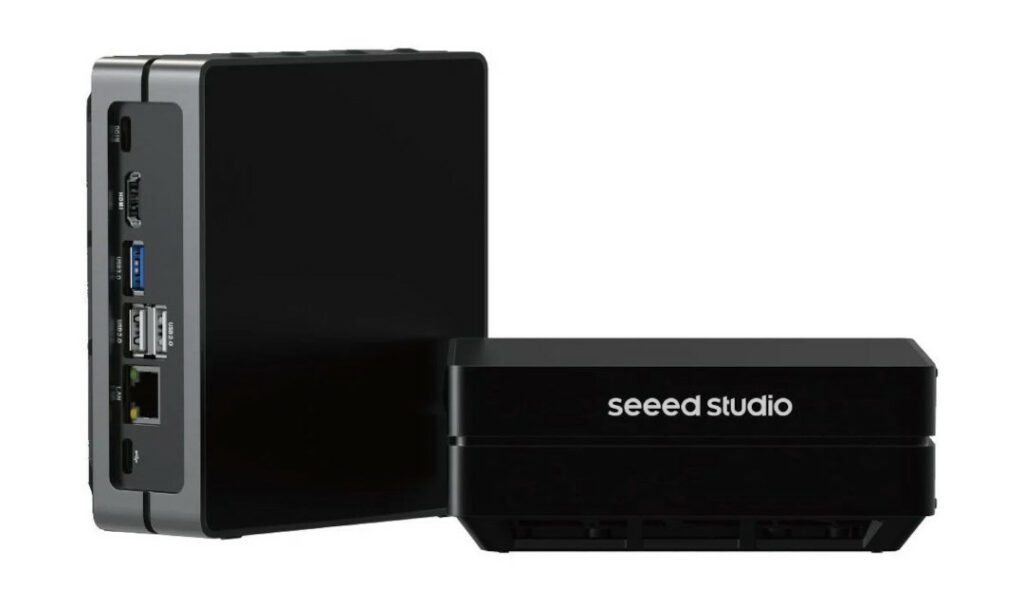Table of Contents:
The Raspberry Pi isn’t the only SBC market alive.
ASUS, known for its consumer products, is entering the race with the ASUS Tinker Board – a single-board computer of similar size to the popular RPi, but which offers slightly higher performance.
But can it actually compete with the globally popular Raspberry?
ASUS Tinker Board - what is it?
When an old laptop or smartphone can no longer serve in everyday life, but at the same time represents too much for the needs of an electronic DIY project, with an affordable alternative rush to us single board computers (SBC, for Single Board Computers).
The year 2024 marks twelve years since the first Raspberry Pi launched the phenomenon and seven years since Asus joined the race with its original Tinker Board.
The next-generation Tinker Board 2S was soon released to compete with today’s more powerful options.
It has quite a bit of potential in the hands of so-called “tinkerers.
“tinkerers” – peculiar tinkerers who surprise us with new projects every now and then. Admittedly, the Tinker Board 2S is not reinventing the wheel.
Its size is more or less like a deck of cards, and it seems to be confusingly similar in size and shape to the Raspberry Pi – we’re talking about the 2S and the Tinker Board 2, which only has a microSD card slot for storage, while the 2S has both a slot and 16 GB of eMMC flash memory.
It does, however, fit a lot of functions on such a small circuit board.
ASUS Tinker Board - specifications
The brain of the Tinker Board 2S is a 64-bit Rockchip RK3399 system-on-a-chip.
It consists of a dual-core ARM Cortex-A72 running at 2.0 GHz and a quad-core ARM Cortex-A53 running at 1.5 GHz.
This big.LITTLE design, as ARM calls it, allows the two processors to dynamically allocate tasks to the appropriate core to reduce power consumption.
Depending on the model you choose, you also get a Mali-T860 MP4 GPU running at 800 MHz and 2 GB or 4 GB of dual-channel LPDDR4 memory.
The I/O theme is quite comprehensive – I/O on the ASUS Tinker Board is four USB 3.2 Gen 1 ports – three Type A, one Type C – with a USB-C connector that also supports OTG and DisplayPort for connecting an external monitor.
The Tinker Board 2S also has a full-size HDMI port, so that two displays can be connected.
There’s also standard Gigabit Ethernet and the aforementioned microSD card slot, as well as RTC battery connectors, a fan connector, MIPI DSI and CSI, and the always useful 40-pin GPIO connector, which has been color-coded for convenience.
The board is also equipped with 802.11ac Wi-Fi and Bluetooth 5.0 on a removable M.2 card with an external antenna.
The power connector on the 2S version, because this, the newer version we are mainly concerned with, has changed – it uses a 5.5mm connector instead of microUSB or USB-C.
You also have to take care of your own power supply.
An interesting point is the built-in 16GB eMMC memory.
Installation of the operating system on the Tinker Board can be done by connecting it to a desktop or laptop computer via a USB-C cable.
Once powered up with a power adapter, the 2S is seen as a storage device that can be used with Etcher or Win32 Disk Imager.
You can download Debian and Android images from Asus for installation, or download a specific image for your project.
What can the ASUS Tinker Board do?
On the Botland Blog we have repeatedly written about what SBC microcomputers can do.
Let’s take a look at this particular case.
Everything that the Tinker Board offers adds up to a pretty powerful single board computer that can handle a wide variety of projects.
In general, it is also difficult to make definitive judgments and “completely test” the devices, which feature an open design and much depends on the context, or rather the project we plan to build.
In theory, the board Raspberry Pi 4 and ASUS Tinker Board almost exchange performance and efficiency, but the Tinker Board, for example, scored better in some cryptography-related tests.
Since the Tinker Board 2S supports ARMv8 cryptographic extensions, it may be more suitable for a home VPN project.
Again, the best hardware for the job depends on the application, and you may need to dig deeper into the specifications relevant to your project.
For example, the quick start guide, the so-called Quick Start Guide that comes with the board, turns out to be quite lacking in information, according to many users, and in fact omits some useful details found in the full manual available on Asus’ website.
It’s also not exactly beginner-friendly, where the more widespread and simply more frequently mentioned Raspberry Pi in the communities prevails.
What to choose - ASUS Tinker Board or Raspberry Pi?
While you can build your own system from scratch using Debian or Android, many popular projects – such as the LibreELEC Kodi player or the RetroPie video game system – have ready-made images that you can flash onto a microSD card to get up and running in no time.
The Tinker Board 2s still doesn’t have as many images, although they are being created, and at the same time this is considered a common problem among new boards on the market.
You probably won’t get the kind of detailed step-by-step help you can usually count on for the more popular platforms Raspberry Pi or Arduino.
While the Tinker Board 2S is a pretty good piece of hardware, from a practical point of view, for many users it doesn’t offer a big enough leap forward over the firmly established competition – especially when you consider the size of the Raspberry Pi community.
Raspberry remains the first choice, but if for some reason it doesn’t fit your design needs, you can always delve into the specifications of the Tinker Board and Tinker Board 2S – who knows, it may reveal a feature that will make Asus a better option, although you should rather assume that you’ll have to pay extra for this “replacement.”
Let’s also not forget that the Raspberry Pi is widely supported by software manufacturers, which means that many applications and operating systems are optimized for this particular device.
Tinker Board, although it supports Linux and Android operating systems, may not have such a wide range of available applications and solutions.
How useful was this post?
Click on a star to rate it!
Average rating 0 / 5. Vote count: 0
No votes so far! Be the first to rate this post.




















